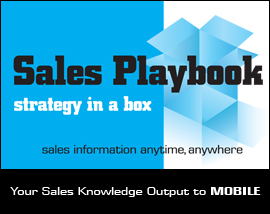Virtual Training With A Human Touch: Training Your Sales Reps Right

It’s not a secret that technology has affected all learning, including in sales. As we move towards a more distance learning platform we’re starting to replace the human element, something that is felt negatively in sales specifically.
Sales is a face-to-face game, whether it be via Skype, another platform or an actual face-to-face conversation with a customer. As you move into deeper relationships with clients human interaction becomes vital. This cannot be replicated in a technology environment. Though technology can become a powerful tool when reinforcing skill sets, it’s hard to use it to teach them for the simple reason that it eliminates feedback. Rehearsing things like how to deal with customer objections is much more effective in a classroom setting, where important feedback can be shared easily. These instances of experiential learning are critical in developing successful sales reps and are almost impossible to replicate within distance learning.
Online training is great for some things: product or service information, safety procedures, HR policies, these are all areas where we’ll see technology grow. But, when it comes to things like leadership and sales (areas that involve lots of human interaction), we see technology being good for reinforcement not initial training. Individuals should learn and practice the skills in a classroom setting, then implement them as a part of the cultural transformation that the company embeds into the organization. Though training is important, the transformation is critical; this is where technology/distance learning continues to prove beneficial.
While sales is going to continue to transform over time, the human element of sales isn’t going anywhere and will actually become more important over time. It is here where the creation of value will happen, not on the technology side. People don’t want knowledge, they want insight and to get that, salespeople need to become an information resources to clients, not a database.
read moreUrgent vs. Important: Know The Difference

There’s always “important” things going on in one’s life. Growing your career, locking in new customers, finishing that business plan you started months ago, these are the things you really want to do but don’t, or in some cases, can’t.
With each “important” item it seems there are at least two other “urgent” things that, justifiably, need your time/attention and yours only. And so it happens, human nature, pushing off the important in favour of the urgent.
Everyone has this challenge, but some people are able to move past it and manage it easier. Think about the last time you made a major move because of something important to you, a move that propelled you upwards and not just forwards… Instead, we base our day to day’s on urgencies, tasks that in a few years won’t even be on your plate. We do this to feel competent. We’re good at the urgencies, we’ve proved we can complete them and that’s why they’re ours to begin with. The biggest challenge in this is recognizing that the “important” is typically filled with fear. Fear of failure, fear of wasting time, fear of change.
Now that you know why there is a difference, consider allotting more time for the important. The urgent can wait… At least for now.
read moreExiting: We Can Help

The most important thing shareholders should know about exits is that only 25% of saleable companies end up having a successful exit. Most owners sell for less than they should have received, with many having no idea they have left millions of dollars on the table. Just imagine how many prime exit opportunities that are missed because of companies being reactive rather than proactive. Companies need to be planning and strategizing their exits in order to optimize the move.
Think of the exit as just another business process, meaning an “exit strategy” is necessary. Set realistic timelines and keep in mind that the time invested by you and your team directly affects the final price and the probability of closing a transaction. A good estimate is one to two years for an experienced team.
Even though you’re exiting, doesn’t mean your value drops. Companies should be sold, not bought, and there are many factors that affect saleability. There are lots of ways to maximize your price, and GSD can help with them. We can assist by building value in your company by defining sales processes, streamlining service level definitions and showing growth through increased sales figures. The key to all of this is recurring revenue, something we can help build. There is a direct relationships between sales figures and valuation, and GSD can assist in higher revenue figures, leading to a higher sale price when exiting.
read moreHow to Create Engaging Presentations Online

The biggest difference between an online presentation versus a face-to-face presentation is the level of engagement you have to maintain with the audience. When presenting online, you have to engage the audience way more. Whether it be questions or pulling commenters, more frequent engagement online will lead to a more effective presentation.
Consider things like polls to engage viewers directly, and don’t be afraid to include lots of animations. Online viewing can get very static very fast; throwing in images with the text is an easy way to avoid this. As people are viewing the presentation it’s important that there are constant changes happening on the screen to keep them engaged and interested. People tend to view content, process it and then click away to one of their many other devices (email, texting etc.). And because you don’t get second chances at a first impression in the online world, the presentation has to do more then just grab their attention, it has to keep it.
When designing a powerpoint for online you want to insure you aren’t displaying the text all at once. You want bullet points with relevant information to appear as you move through the presentation. Your online presentation should be customer-focused, and you should provide the audience with relevant information (that’s the reason they’re watching it to begin with). Think about what the customer may be thinking while you are presenting and create an effective story tailored around this.
A good rule of thumb is that every six to seven seconds something should be changing on the screen. A good way to insure this is having interesting and effective transitions throughout. Another good tip is to allow questions the entire time. Many people keep time at the end for the audience to ask questions, but allowing them to free flow through things like chat will lead to a more involved, interactive audience. The final tip we have to keep viewers engaged is vocal variety, meaning you have multiple presenters speaking to different parts throughout the webinar. Have a product you’re selling? Have the sales rep speak to it. New marketing trends emerging? Have your communications specialist jump in. The more the better!
read moreHiring Outside Sales Agent Support: Why & How

Toying with the idea of hiring a third party to help with sales? It’s not the worst idea and can actually be the best move for some organizations! If your company does not have the resources to provide full time employment, benefits, severance or other typical employee obligations, hiring an agent at part time can cut costs. Your company also may lack the skills necessary to direct a sales rep. Having someone come in independently typically means they will be comfortable leading themselves, leaving you with more time to focus on your strengths as a business owner, manager etc.
Once you get to the scouting process be sure to look for proven skills and a record for revenue generation, because at the end of the day sales is about making money for your business. Remember that experience is important, it creates comfort for you as a business owner, but don’t discount newer industry professionals. Younger agents are typically more eager to work and will make suitable candidates if they have the proper attitude and a work ethic.
When hiring an outside sales agent consider it an investment, and when evaluating look at it as three fold: they are paid advertising and marketing exposure, they will identify leads or customers that can be nurtured longer term (i.e. an opt in email campaign), and any sales they do make are considered a customer for life and should be measured for the repeat business value as well. When conducting your ROI on the agent look at all three variables. When deciding on an appropriate pay plan, be sure you aren’t spending too little or too much. Reach out to your network and obtain advice on how to strike a balance between minimum pay for effort and variable pay for performance. Be sure to have clear objectives surrounding all the agent’s activity and identify opportunities to insure a quick start and clear deliverables.
In some cases, keeping your sales support internal is the better move. If your sales process is less complicated and requires a lot of touch point early on in the process (meaning more consistent customer communication), hiring within should suffice. A good rule of thumb is if your selling process is non-consultative, it’s usually a safe bet to hire an outside sales agent.
read more

